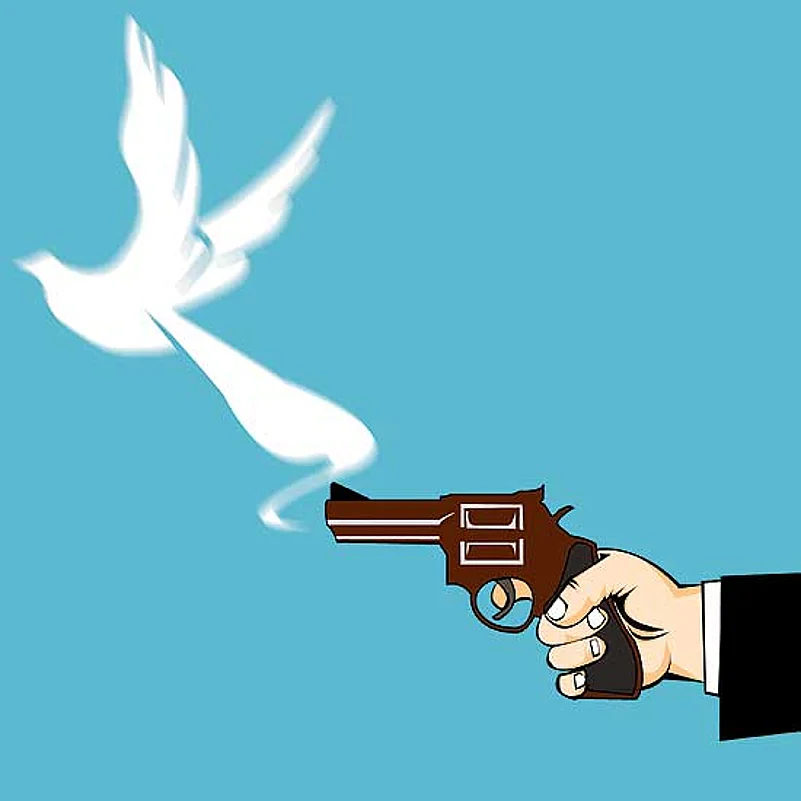Nitish Kumar, the chief minister of Bihar, must be a relieved man. On the eve of the announcement of assembly election dates, the Lakhisarai hostage crisis was resolved, with the Maoists releasing three of the four policemen they had taken captive after an ambush. They killed the fourth, Lucas Tete, a havaldar of the Bihar Military Police. Even so, this was a resolution achieved with more considered deliberation than, say, last year’s hostage crisis in West Bengal, in which the state freed 14 Maoist prisoners in exchange for inspector Atindranath Dutta, or the heated rhetoric around the beheading by the Maoists of Francis Induvar, a policeman of Jharkhand.
According to sources on both sides, quiet political contact was established between the Bihar government and the rebels even as the Centre was sending a helicopter to comb the Lakhisarai hills. This was immediately reflected in Maoist spokesperson Avinash muting his rhetoric thereafter. The denouement marks the difference between what might be called the ‘Nitish approach’—in contrast to the ‘Chidambaram approach’—to the Maoist challenge. More seriously, the duality might be called the political approach versus the security approach.
The two approaches are reflected in the language used by the practitioners. Central leaders have of late been describing left-wing extremism as the greatest internal security threat in their speeches, whereas Nitish, in his first speech on All India Radio after becoming chief minister, described it as a particular politics that adhered to violence. He went on to say his government would act to “curb (the Maoist) violence but allow other expressions of their politics”. This is a position the Bihar government has consistently expressed, even at conferences on the Maoist problem organised by the Centre.
The difference in choice of words translated into action too. Just after Nitish took office, the women’s front of the Maoists organised a rally in Patna on March 8. The government not only permitted the rally, it even provided water-tankers to quench the participants’ thirst. Fingers have been pointed at home minister P. Chidambaram in the matter of the killing of Cherukuri Azad Rajkumar at the hands of Andhra Pradesh police at a time the rebel leader was readying for peace talks. In contrast, Nitish is learnt to have forbidden the Bihar police from mistreating Maoist leader Ajay Kanu on his rearrest in 2007. Kanu had masterminded and led the Jehanabad jailbreak of 2005, in which about a thousand Maoists assaulted the jail staff, freed themselves, and took captive many members of the rival Ranvir Sena, a caste army, who were also in prison.
His political approach has gone even deeper than the above instances. Sikaria, home to quite a few Maoist leaders and commanders, is the village where the Naxalite movement sprouted in the Jehanabad belt in the 1980s. It is also where the Bhumi Sena, a caste army of well-to-do Kurmi farmers, was founded to fight the Naxalites. Therefore, it was of great symbolic significance that Nitish inaugurated his special development programme for the Maoist-controlled belt, ‘Sarkar Apke Dwar’, in this place. By the way, Nitish is also a Kurmi, as are leading Maoists from this village. It is said that Nitish not only persuaded the Maoists to allow development works, he also let them oversee the execution of these projects. Independent analysts vouch for the relatively better execution of development works in this area. Even in Lakhisarai, where the recent crisis played out, activists concede that the NREGA scheme is better implemented.
The efficacy of Nitish’s approach is borne out by the fact that his tenure has seen far less Maoist violence than the preceding Laloo-Rabri regimes, or even the Congress governments of the distant 1980s. The level of violence during Nitish’s tenure has been of lower intensity than in other Maoist-affected states like Chhattisgarh, Jharkhand, West Bengal and Orissa too.
Then why the recent hostage-taking? Probably it is part of Maoist leader Kishenji’s threat to spread the war and make it dirtier in response to the Centre’s multi-pronged onslaught. We have to watch how Nitish’s political approach factors in this reality. And why was Tete killed but not his other captured colleagues? Was it because the Yadav-dominated Maoist cadres and leadership in Bihar were insensitive to the life of a tribal in order to spare their caste-fellow, inspector Abhay Yadav, as some quarters allege? That’s unlikely, because tribals are central to Maoist mobilisation and propaganda in the bigger picture. Why then? Sources familiar with Maoist ways or close to the ruling Bihar leadership say they too are trying to find out.
















